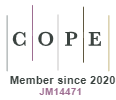Lessons learned in erp implementation in saas mode: from the perspective of the multi-site project team and stakeholders
DOI:
https://doi.org/10.5585/iptec.v9i1.18698Keywords:
ERP, SAAS, Multilocation team, Stakeholders, Lessons learned.Abstract
The growing increase in Internet bandwidth and the rapid changes in business needs, is leading organizations to adopt information systems infrastructures that are economical and flexible. The purpose of this report is to present, from the perspective of the multilocalized project team and stakeholders, a model that was developed through lessons learned, which will mitigate the challenges in implementing cloud Enterprise Resource Planning (ERP), in the SaaS - Software as a Service model. To achieve the proposed objective, data were collected from the project documentation, in addition to the direct participation of one of the authors. The results present an ERP implementation model with practical solutions to mitigate the challenges of: changing processes in the implementation of ERP; functional team availability for participation during validation and redesign of the organization's business processes; stakeholders availability to validate software improvement updates; multi-localized teams management. The report contribution is, through lessons learned, to provide a model for companies that work with systems implementation.
Downloads
References
Arditi, D., Nayak, S., & Damci, A. (2017). Effect of organizational culture on delay in construction. International Journal of Project Management, 35, 136-147.
Avram, M. G. (2014). Advantages and challenges of adopting cloud computing from an enterprise perspective. Procedia Technology Systems, 12(1), 529-534.
Benlian A. & Hess, T., (2011). Opportunities and risks of software-as-a-service: Findings from a survey of IT executives. Decision Support Systems, 52(1), 232-246.
Biancolino, C. A., Kniess, C. T., Maccari, E. A., & Rabechini, R., Jr. (2012). Protocolo para elaboração de relatos de produção técnica. Revista de Gestão e Projetos – GeP, 3(2), 294–307.
Bjorn, P., & Ngwenyama, O. (2009). Virtual team collaboration: building shared meaning, resolving breakdowns and creating translucence. Information Systems Journal, 19(3), 227–253.
Daim, T. U., Ha, A., Reutiman, S., Hughes, B, Pathak, U., Bynum, W. & Bhatla, A. (2012). Exploring the communication breakdown in global virtual teams. International Journal of Project Management, 30(2), 199-212.
Duffield, S. M. & Whitty, S. J. (2016). Application of the Systemic Lessons Learned Knowledge model for Organisational Learning through Projects. International Journal of Project Management, 34(7), 1280–1293.
Hofmann, P. & Woods, D. (2010). Cloud Computing: The Limits of Public Clouds for Business Applications. IEEE Internet Computing, 14(6), 90-93.
Holland, C. P., & Light, B. (1999). A Critical Success Factors Model For ERP Implementation. IEEE Software, 16, 30-36.
Hsu, P. F., Ray, S. & Hsieh, Y. L. (2014). Examining cloud computing adoption intention, pricing mechanism, and deployment model. International Journal of Information Management, 34(4), 474-488.
Jugdev, K. (2012). Learning from lessons learned: Project management research program. American Journal of Economics and Business Administration, 4(1), 13.
Keeys, L. A., & Huemann, M. (2017). Project benefits co-creation: Shaping sustainable development benefits. International Journal of Project Management, 35(6), 1196–1212.
Kirmizi, M. & Kocaoglu, B. (2021). The influencing factors of enterprise resource planning (ERP) readiness stage on enterprise resource planning project success: a project manager’s perspective. Kybernetes, ahead-of-print.
Klaus, H., Rosemann, M. & Gable, G. G. (2000). What is ERP?. Information Systems Frontiers, 2(2), 141‐162.
Marston, S., Li, Z., Bandyopadhyay, S., Zhang, J., & Ghalsasi, A., (2011). Cloud computing - The business perspective. Decision Support Systems, 51(1), 176-189.
McClory, S., Read, M. & Labib, A. (2017). Conceptualising the lessons-learned process in project management: Towards a triple-loop learning framework. International Journal of Project Management, 35 (7), 1322-1335.
Mital, M., Pani, A. K., & Ramesh, R., (2014). Determinants of choice of semantic web based Software as a Service: An integrative framework in the context of e-procurement and ERP. Computers in Industry, 65(5), 821-827.
Ross, J. W. & Vitale, M. R., (2000). The ERP Revolution: Surviving vs. Thriving. Information Systems Frontiers, 2(2), 233-241.
Seethamraju, R. (2014). Adoption of Software as a Service (SaaS) Enterprise Resource Planning (ERP) Systems in Small and Medium Sized Enterprises (SMEs). Information Systems Frontiers, 17(3), 475-492.
Sommerville, I. (2011). Engenharia de Software. 9 ed, São Paulo: Pearson Prentice Hall.
Turner, R. & Zolin, R. (2012). Forecasting success on large projects: developing reliable scales to predict multiple perspectives by multiple stakeholders over multiple time frames. Project Management Journal, 43 (5), 87–99.
Weimann, P., Pollock, M., Scott, E. & Brown, I. (2013). Enhancing Team Performance Through Tool Use: How Critical Technology-Related Issues Influence the Performance of Virtual Project Teams. IEEE Transactions on Professional Communication, 56(4), 332-353.
Downloads
Published
How to Cite
Issue
Section
License
Copyright (c) 2021 Revista Inovação, Projetos e Tecnologias – IPTEC

This work is licensed under a Creative Commons Attribution-NonCommercial-ShareAlike 4.0 International License.
- Abstract 489
- PDF (Português (Brasil)) 405






